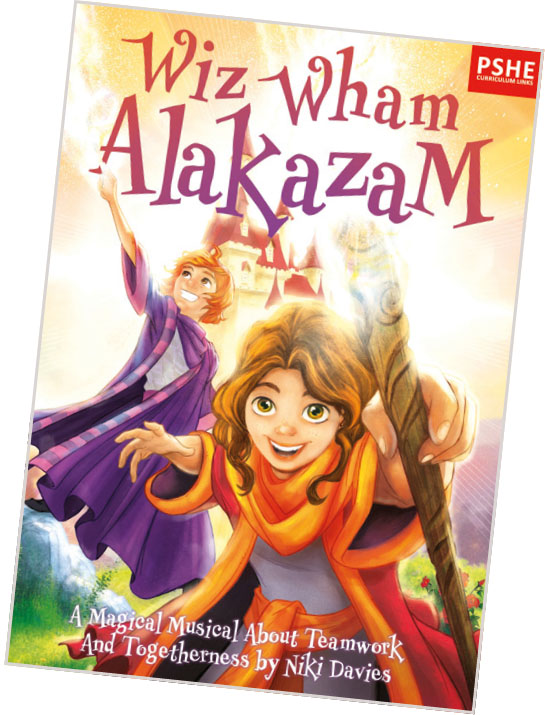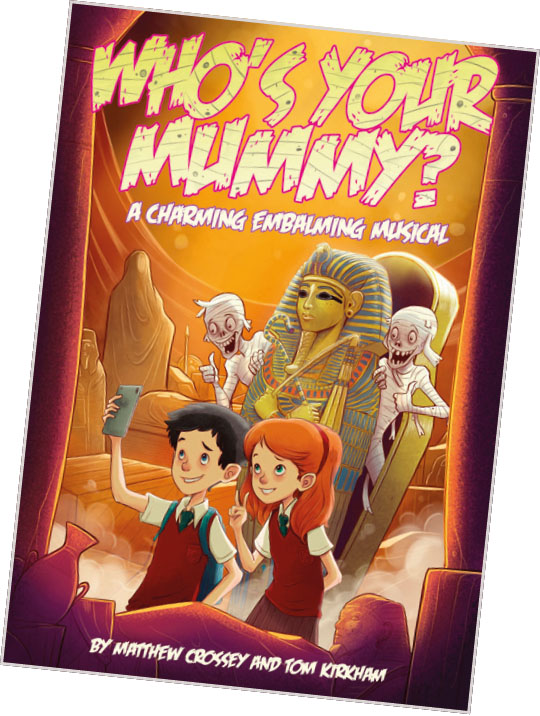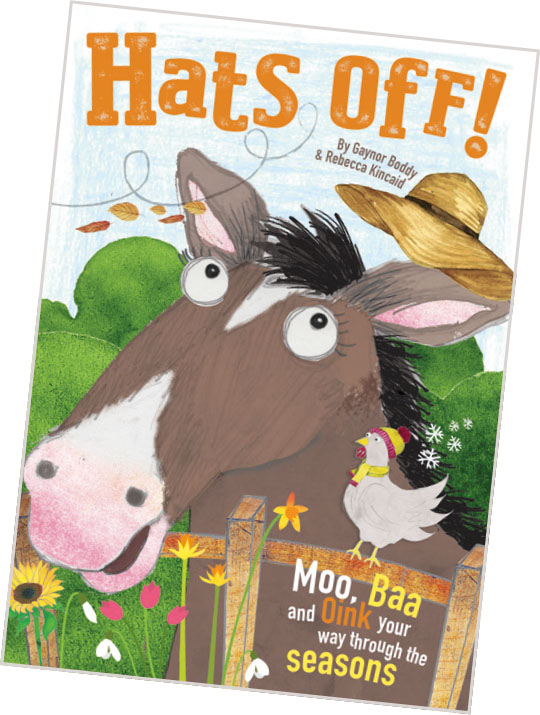
SPIDERWEB MUSICALS
Tin Hats and Telegrams
By Ali, John, Theresa and Tom Kane
Ages 7-11
This November marks the end of the hundred-year anniversary of the First World War – this musical offers a beautiful way to commemorate it.
Taking place at the very end of the war, we follow the impact that the conflict had on one village, with their losses and courage given a voice. The action switches between the Front and the village, which might mean small set changes but much could be accomplished with a clever use of costumes – a lot of helpful hints can be found throughout the book. There's nothing that directly highlights curriculum links but they are not difficult to spot – an understanding of history and geography, while not necessary, can be used to increase students’ experience and overall enjoyment of the narrative.
Chock-full of historical facts, this play really brings the war to life, even the less well-known aspects like the women ambulance drivers – here made a key part of the story (and appearing on the cover). It doesn't shy away from the sadness of trench life, and it even touches on the importance of seeing past the differences that led to war through a spirited bilingual rendition of ‘O Christmas Tree’.
A mainly original score, with some traditional carols thrown in, all are emotionally effective from the cheery spin on trench life in ‘There's a Poem in a Biscuit’ to the jubilance tinged with loss of ‘This War is History’. Many of the lead roles require solo singing so building up confidence is key to doing this one well.
It made for quite an emotional read through so you're practically guaranteed tears on performance. A meaty piece of musical theatre for Years 5 and 6 to work together on as the cast list can be expanded with additional soldiers on the Front and children and villagers back home.
THE SCHOOL MUSICALS COMPANY
Wiz Wham Alakazam
By Niki Davies
Ages 5-9

Move over Harry Potter, there are some new wizards in town. This charming musical tells the story of a ragtag group of wizards who must learn to work together to stop the sun going out.
I loved the songs here and I was already imagining how we would stage them while I was listening to the soundtrack. ‘Wizard Singers’ in particular is very catchy – you've been warned!
Each of the songs is done by a particular group, the wizards or the ice creatures, and while the script calls for plenty of action from them while singing, you could separate this out if you have a bigger cast or less confident students. The script suggests a cast size of 40 but it's possible to do it with up to 70 students, as many of the wizard lines are not specific to a particular character and could easily be divided up.
In terms of costumes, bedsheets make for good wizard robes in a pinch or you may wish to make your nativity costumes pull double duty, shepherd beards included.
As well as the script, the book has plenty of resources that any teacher would find useful. From classroom activities to explanations of how the play helps you meet your PSHE and British values obligations. For example, the wizards have a meeting and hold a vote, which can be used to discuss democracy, and the wizards Hugsalot and Hugsalittle subtly discuss consent when it comes to being hugged. In all, a great musical for Years 3 and 4 to have a lot of fun with while learning important lessons about co-operation and celebrating difference.
Who's Your Mummy?
By Matthew Crossey and Tom Kirkham
Ages 9-13

A surprisingly gripping love-story about Ancient Egypt, doomed mummies and the children who try to help them out. Taking place in the modern day, it follows a school trip to the British Museum with flashbacks revealing the tragic backstory of the mummies that the children encounter.
All the songs were winners for me – they all added something to the narrative and the different styles and tones throughout mean that you can have a lot of fun with them. The policemen's songs can involve a lot of physical comedy and silly accents as you need to convey their ineptitude – great for any aspiring hams!
The character profiles break each role down nicely, explaining the part and the general traits they need to convey, and orders them by number of lines, so you have a good idea of how to cast. There are quite a few solos throughout so strong voices are needed to carry the parts well – one is a love song, so finding two actors who can take it seriously is definitely important.
In terms of teaching history, take the musical with a pinch of salt. For example, the first song describes Ancient Egypt as ‘not that hygienic’, but Herodotus wrote quite extensively about the high hygiene standards of Egyptians in the fifth century BC. As a route into researching such topics though, the musical makes for a good resource – the book has suggested areas of interest to research, suggestions for tying it to the curriculum, and ideas for planning lessons.
As this is quite a lengthy two-act musical – with some difficult-to-broach subjects to boot – I'm not sure how confident I would feel doing this with a Year 5 and 6 class, but your mileage may vary.
OUT OF THE ARK MUSIC
Hats Off!
By Gaynor Boddy and Rebecca Kincaid
Ages 3-7

A lovely story about a donkey and her quest to wear a hat – simple but a great way to tell a story that explores all four seasons, making use of a range of genres to portray the changes. Appropriately, all of the songs are fun, straightforward and short so you can really focus on getting it right.
All of the characters are great, with some funny interactions between them – even smaller parts like the chickens and pigs. These would be great for the chatterboxes in your class, as they are exactly what the part calls for! You may wish to do the narrator yourself unless there's someone in your class that can really get it right, as there are a lot of lines to read.
I can see this working very well as a Year 2 production, with Year 1 students helping create the farmyard feel. Indeed, where the first song has a rather fast ending featuring all the animal noises, the script suggests replacing it with a ‘loud cacophony’ if you find that young students can't keep their noise-making in time with the music.
The book is very useful, containing lots of clear information about curriculum links and practical suggestions for adapting the production to suit the needs of your class, such as adding percussion to mimic the crunch of autumnal leaves. The version that I had came with a second CD which runs on your computer as an additional resource, including all the information in the book as printable pages.








